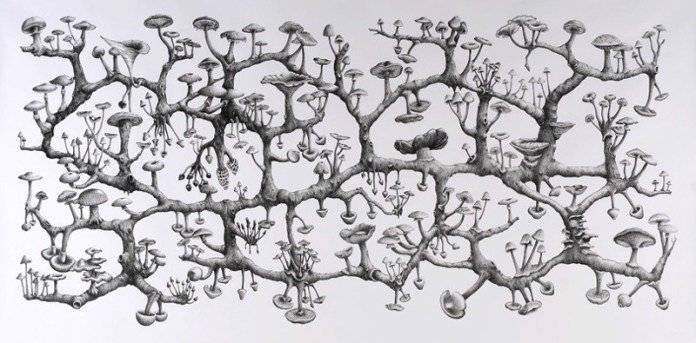Rhizomes
While I’m still early in my understanding of it, the philosophy of Philosophers – Deleuze and Guattari speaks to me. It fascinates me because it reveals a powerful truth:
- We don’t just see the world—we interpret it through mental filters
- These interpretations are types of mental models that shape our understanding
- The models we use determine what patterns we notice and how we analyze them
This creates an exciting possibility: by learning new models (like rhizomes instead of trees), we can discover entirely new insights about familiar situations. It leads to new connections in the world around us, new opportunities to grow.
Growth, In What Direction
Imagine you’re looking at two different plants growing in the ground. First is a big oak tree. It has one main trunk, then branches that split off in an orderly way, getting smaller and smaller until you reach the leaves at the very top. Everything connects back to that single trunk.
Now imagine a patch of grass or mushroom. If you look underground, you don’t see such a neat set of roots below a trunk. Instead, you see a tangled web of connections spreading in all directions. Any piece can connect to any other piece. Cut a section out, and it might grow into a whole new plant somewhere else.
The first type is arborescence, or arborescent growth. It’s so common we often don’t name it. The second type of growth pattern is a rhizome, or rhizomatic growth. Philosophers Deleuze and Guattari found this contrast so foundational that they use it to describe how life itself can be viewed.
A rhizome was defined by Philosophers – Deleuze and Guattari in A Thousand Plateaus as a nonlinear network that “connects any point to any other point”. It contrasts a tree that represents arborescence: hierarchical structure with clear organization.

This is an entry in my digital garden. See what else is growing here.